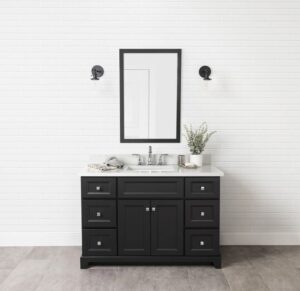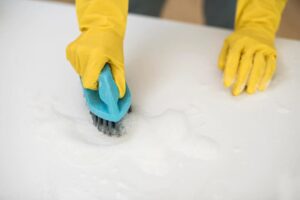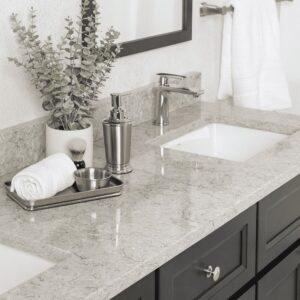How to remove super glue from a countertop? Don’t panic, and definitely don’t reach for a metal scraper. Whether your surface is quartz, marble, or laminate, using the wrong removal method can do more harm than good.
Quartz countertops – like the ones from Rock Solid Vanities – are durable and stain-resistant, but even they need a gentle touch when dealing with glue. In this guide, we’ll show you safe, effective ways to remove super glue from any countertop surface, without scratches, stains, or stress.
Know Your Countertop Surface
Before you tackle that dried super glue, take a moment to identify what kind of countertop you’re working with. Not all surfaces are created equal, and what’s safe for one could damage another.
Quartz countertops in Rock Solid Vanities are made of 92% natural quartz. They’re non-porous, highly durable, and resistant to most stains and scratches. However, even quartz can be damaged by harsh chemicals or sharp tools, especially around the glue-affected area.
Here’s a quick guide to help you identify your surface:
- Quartz: Consistent in color with subtle veining; cool to the touch and very smooth.
- Marble or Granite: Natural stone with dramatic, unique veining; porous and sensitive to acidic cleaners.
- Laminate: Thin surface bonded to plywood or particleboard; lightweight and more vulnerable to scratching.
- Wood: Warm, grainy texture; easily stained or gouged.
Knowing your surface helps you choose the safest removal method. And if you’re not sure, always start with the gentlest option, then test in an inconspicuous area before treating the glue spot.
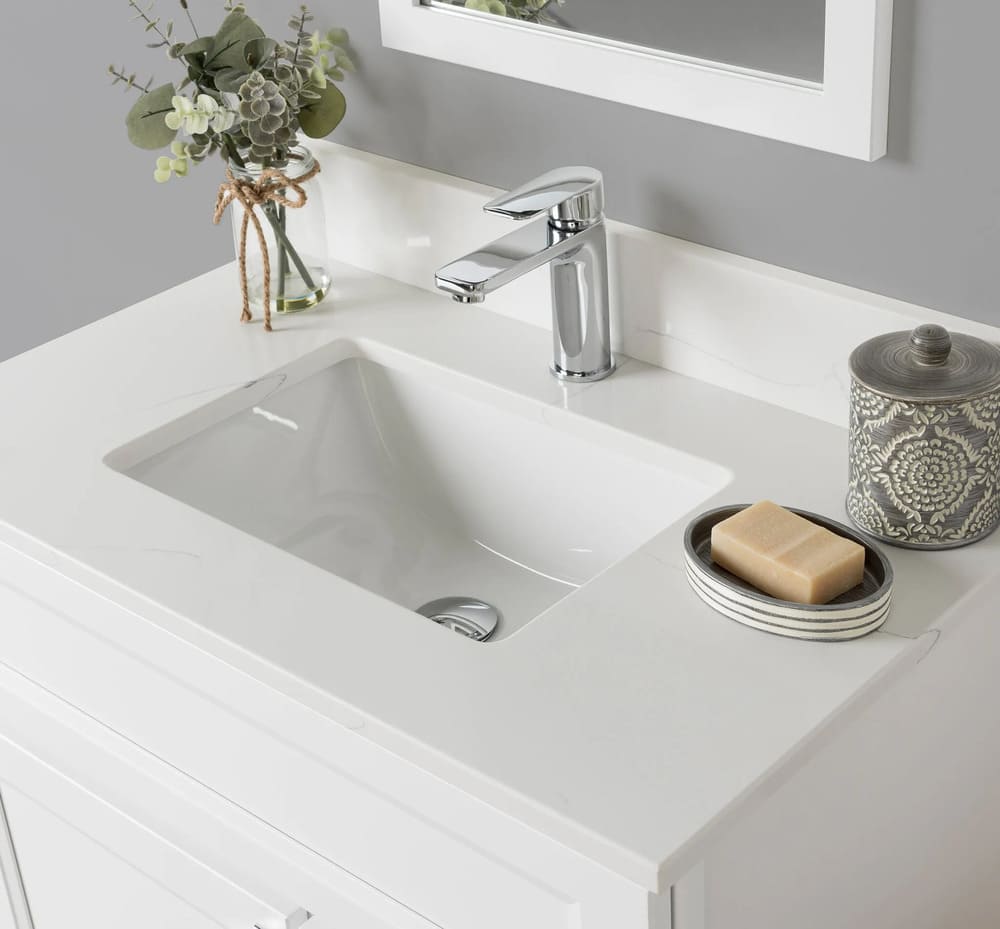
Materials You’ll Need
To remove super glue safely from your countertop, you don’t need harsh chemicals or heavy-duty tools, just the right combination of gentle materials and patience. Here’s what to gather before you begin:
Safe Supplies
- Plastic scraper or old credit card – For gently lifting glue without scratching
- Cotton swabs or soft cloths – Ideal for applying solvents precisely
- Warm, damp towel – Helps soften the glue before treatment
- Isopropyl alcohol (at least 70%) – A mild solvent for most surfaces
- Acetone or nail polish remover (clear, no dye) – Works well but should only be used on surfaces like quartz or laminate, not marble
- Mild dish soap and water – For final cleanup
What to Avoid
- Metal tools or razor blades – Can scratch or gouge your countertop
- Colored or perfumed nail polish removers – May stain light-colored surfaces
- Abrasive scrubbers – Risk of damaging sealants or polished finishes
If you have a quartz vanity top from Rock Solid Vanities, stick to plastic tools and non-abrasive cloths. Their engineered stone tops are scratch-resistant, but not scratch-proof, so a little care goes a long way.
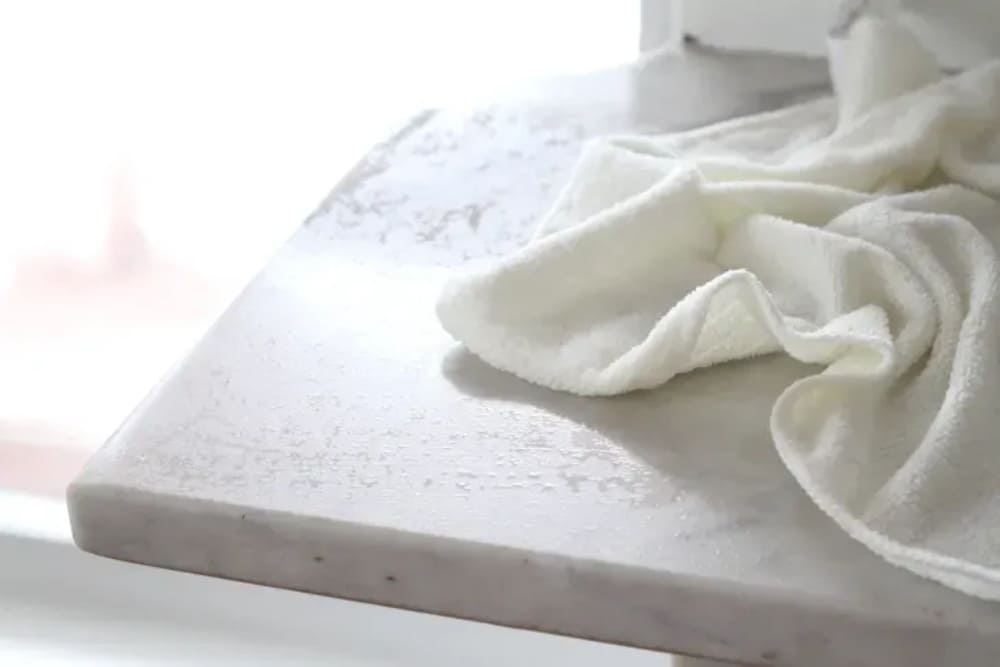
Step-by-Step Removal for Quartz Countertops
If you’re dealing with a spill on quartz, your approach needs to be gentle but effective. Quartz countertops, like those crafted by Rock Solid Vanities, are non-porous and stain-resistant, but even they can suffer if exposed to the wrong solvents or pressure.
Here’s exactly how to remove super glue from a quartz countertop without damaging it:
Step 1: Test First
Choose a hidden spot – like under a vanity lip – to test your cleaning solution (especially if using acetone). This ensures there’s no discoloration or reaction with the finish.
Step 2: Soften the Glue
Place a warm, damp towel over the dried glue for about 10–15 minutes. This helps loosen the adhesive so it’s easier to lift.
Step 3: Gently Scrape
Use a plastic scraper or an old credit card to gently lift the softened glue. Avoid pressing too hard; you’re aiming to remove, not dig in.
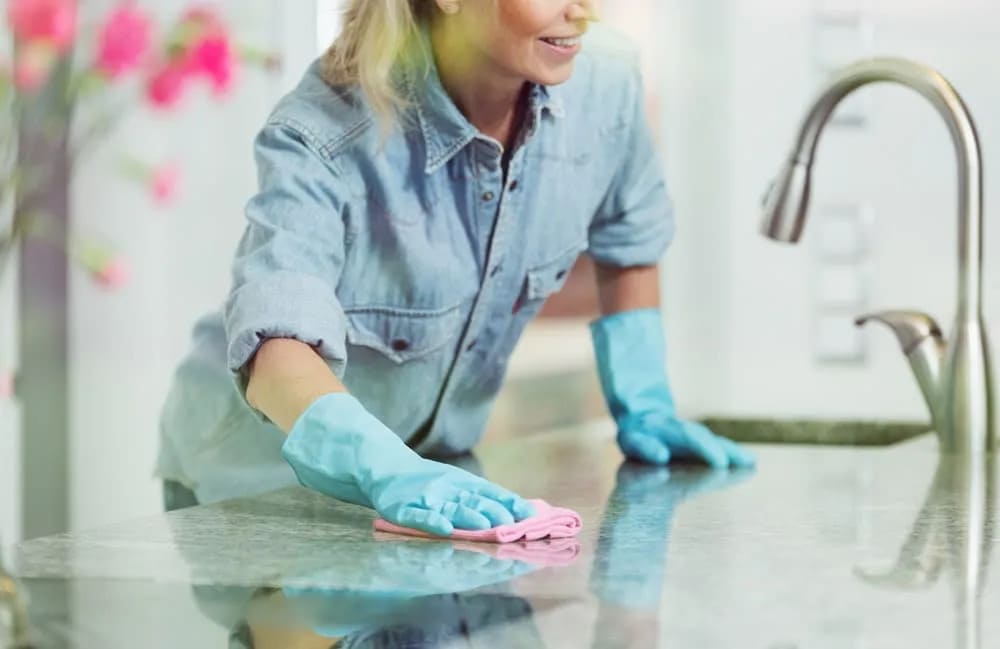
Step 4: Apply Isopropyl Alcohol or Acetone
Dab a bit of isopropyl alcohol on a cotton swab or cloth and gently blot the glue spot. If the glue is still stubborn, try acetone, but only a small amount, and never let it sit too long. Wipe immediately after applying.
Note: Acetone is safe on quartz for short, controlled use, but avoid dyed or perfumed nail polish removers, which can stain the surface.
Step 5: Wipe Clean and Dry
Once the glue is gone, wipe the area with mild soap and water. Dry it thoroughly to prevent any residue or streaking.
This method works especially well on quartz countertops like those from Rock Solid Vanities, built to withstand life’s little mishaps and easy to care for long-term.
Other Countertops – Tailored Approaches
Quartz might be one of the most forgiving countertop surfaces, but if you’re dealing with a different material, removal techniques need to shift accordingly. What works for quartz can permanently damage wood, marble, or laminate if applied without care.
Here’s how to handle super glue based on your specific countertop type:
Laminate Countertops
Laminate is sensitive to heat and abrasion, so gentle methods are key.
- Start with a warm, damp cloth to loosen the glue.
- Use a plastic scraper – never metal – to gently lift dried edges.
- If needed, apply isopropyl alcohol on a cotton swab. Avoid acetone, which may warp or discolor the laminate.
Marble & Granite Countertops
Natural stone is porous and prone to staining, especially with acidic or colored cleaners.
- Avoid vinegar, citrus, or any acidic solution.
- Use a plastic scraper and a pH-neutral cleaner first.
- For tougher glue, acetone can be used, but apply it cautiously with a swab and wipe immediately. Never soak or let it sit.
Tip: Always reseal natural stone afterward if you notice a dull spot, glue or cleaner may have compromised the seal.
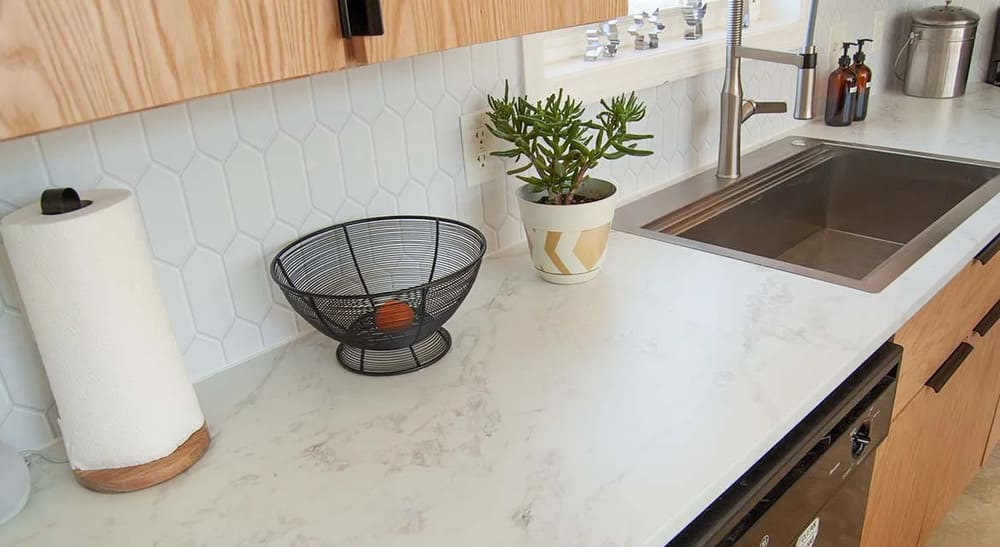
Wood Countertops
Wood is absorbent and more fragile when it comes to moisture or scraping.
- Start with dry methods: try gently peeling with a plastic tool.
- If glue persists, apply heat with a hair dryer on low to soften it, then scrape slowly.
- Avoid water-based solvents, these can stain or warp the wood.
Whatever your surface, always spot test first and lean on non-abrasive, pH-safe solutions. And if you’re ever unsure, especially with premium finishes, refer to manufacturer care guides – like those provided by Rock Solid Vanities – to avoid voiding warranties or causing permanent damage.
What to Avoid
When it comes to super glue, a hasty cleanup can easily cause more damage than the glue itself. These common mistakes might seem like quick fixes, but they can ruin your countertop’s finish or structure in seconds.
Don’t Use Metal Scrapers or Razors
Tempting as it is, these can scratch even hard surfaces like quartz, and they’re especially dangerous on laminate, wood, and marble.
Avoid Dyed or Scented Nail Polish Removers
These often contain additives that leave behind stains or react with countertop finishes, especially lighter quartz shades or porous stone.
Never Soak the Area
Long exposure to acetone or water can seep into porous stone or wood and lead to warping, staining, or delamination.
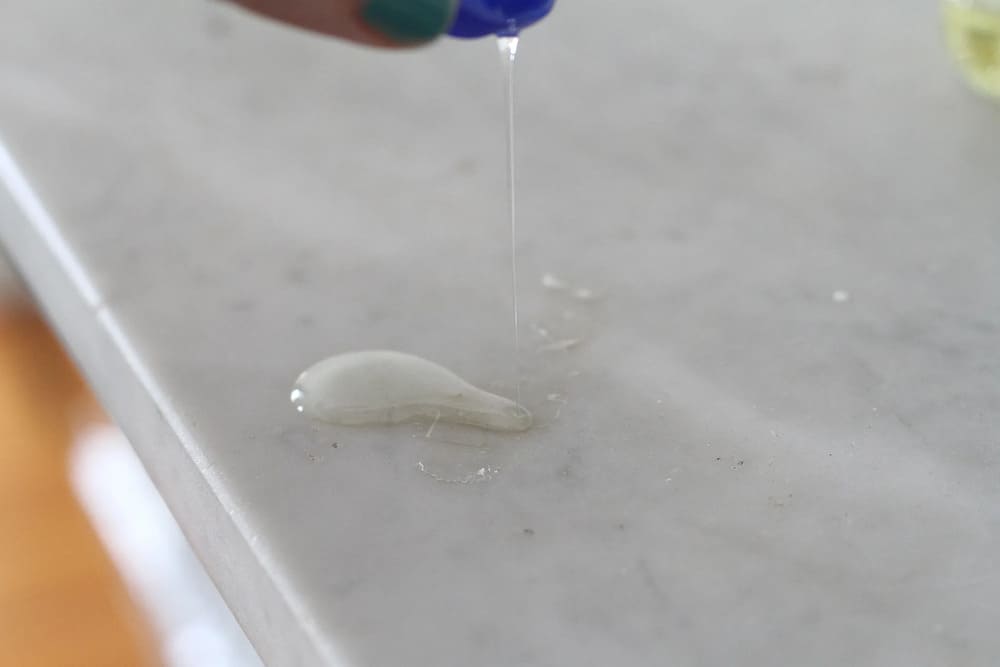
Skip the Abrasive Pads
Scouring pads and hard-bristled brushes can wear down sealants and create a dull, uneven finish.
Don’t Use Heat Tools
Hairdryers, steamers, or heat guns may seem like a good idea, but on sealed surfaces, this can cause bubbling or cracking beneath the surface.
When to Stop and Call a Pro
If glue covers a large area, won’t budge, or you’re unsure of the surface, contact a professional cleaner. Especially for high-end quartz tops like those from Rock Solid Vanities, it’s worth protecting your investment.
Prevent Future Glue Mishaps
Once you’ve removed the glue, the next best step is making sure it doesn’t happen again, especially if you’re working with a premium surface. Super glue accidents are common during quick fixes or DIY projects, but with a few smart habits, you can protect your countertops from future spills.
Use a Protective Barrier
Always place a silicone mat, plastic tray, or even parchment paper under your workspace when using glue. It’s an easy buffer that catches drips before they hit the surface.
Clean Spills Immediately
Don’t wait for glue to dry; grab a warm, damp cloth and blot gently. The sooner you act, the easier it is to remove.
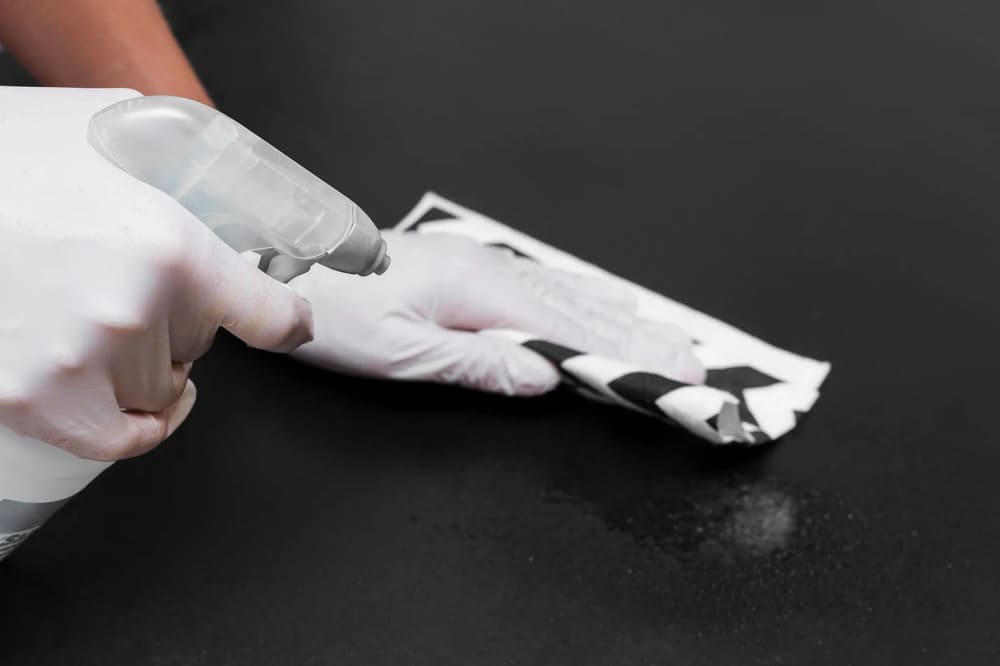
Keep Glue Away from the Sink Area
Bathroom and kitchen sinks are high-traffic zones. Store glues and strong adhesives in a separate cabinet or toolbox to avoid accidents altogether.
Choose a Low-Maintenance Surface
If you’re upgrading your bathroom, consider quartz countertops like those offered by Rock Solid Vanities. Their non-porous, smooth finishes make cleaning easier and reduce the chances of glue or grime bonding to the surface.
Bonus Tip: Keep a dedicated “repair kit” on hand with isopropyl alcohol, soft cloths, and plastic tools – you’ll be ready for quick, damage-free cleanups.
Removing super glue from your countertop doesn’t have to mean damage. With the right tools, like isopropyl alcohol and a plastic scraper, you can clean it up safely, especially on quartz.
If you have a Rock Solid Vanities quartz top, your surface is already built to resist stains and simplify cleanup. But even the best materials need the right care.
Are you still wondering how to remove super glue from a countertop?
Find a Dealer Near You and explore vanities designed to handle real life beautifully.

